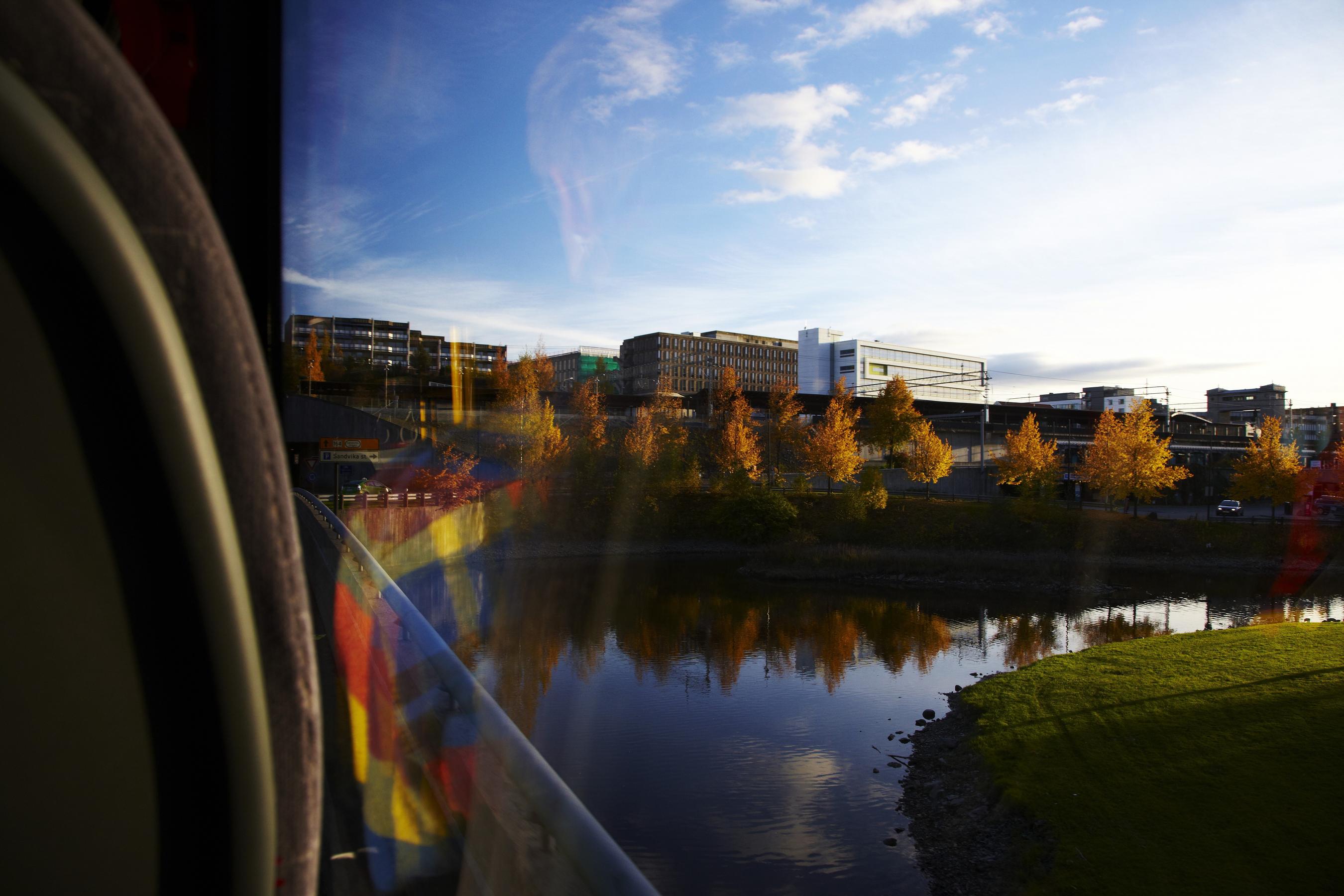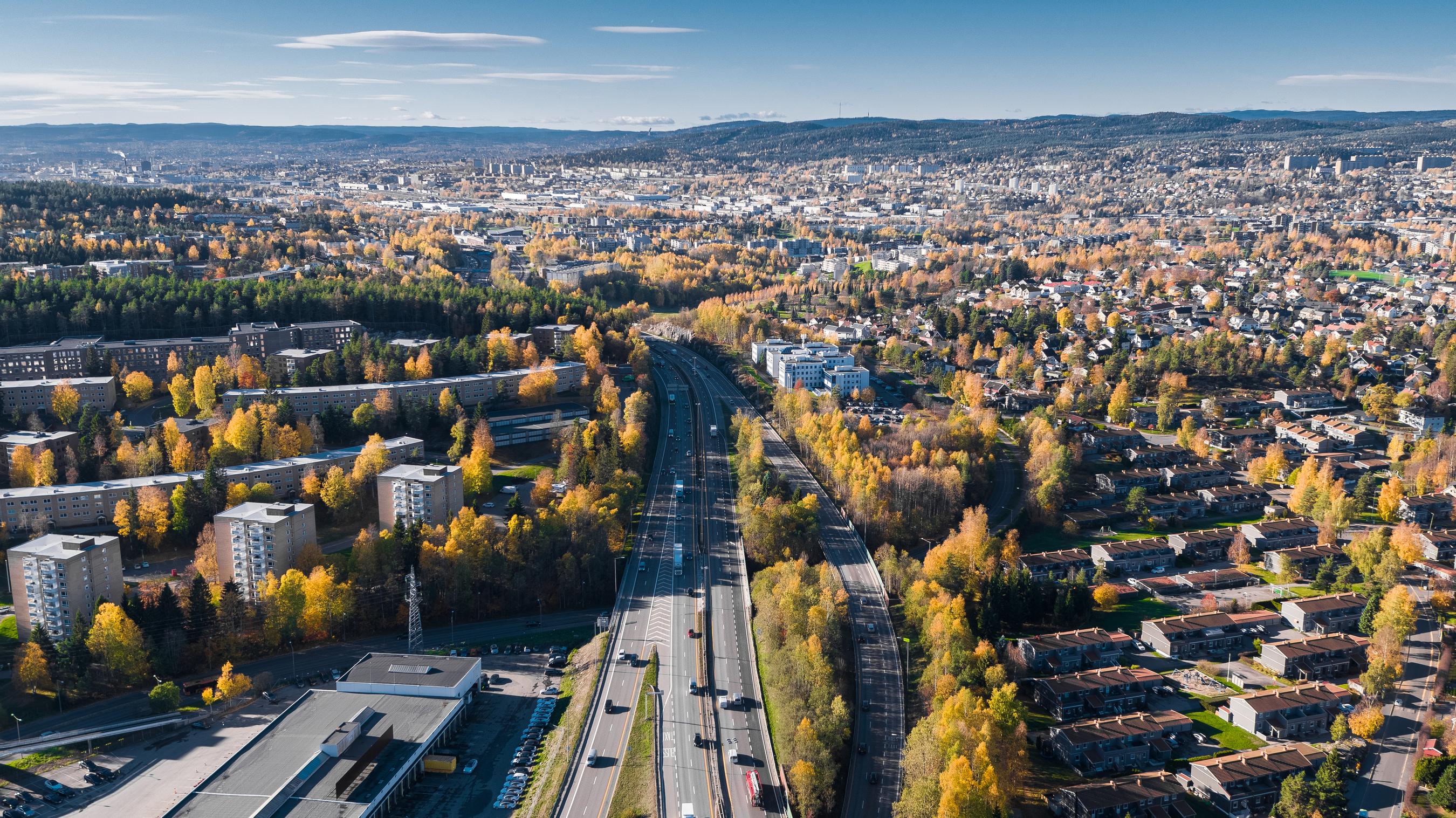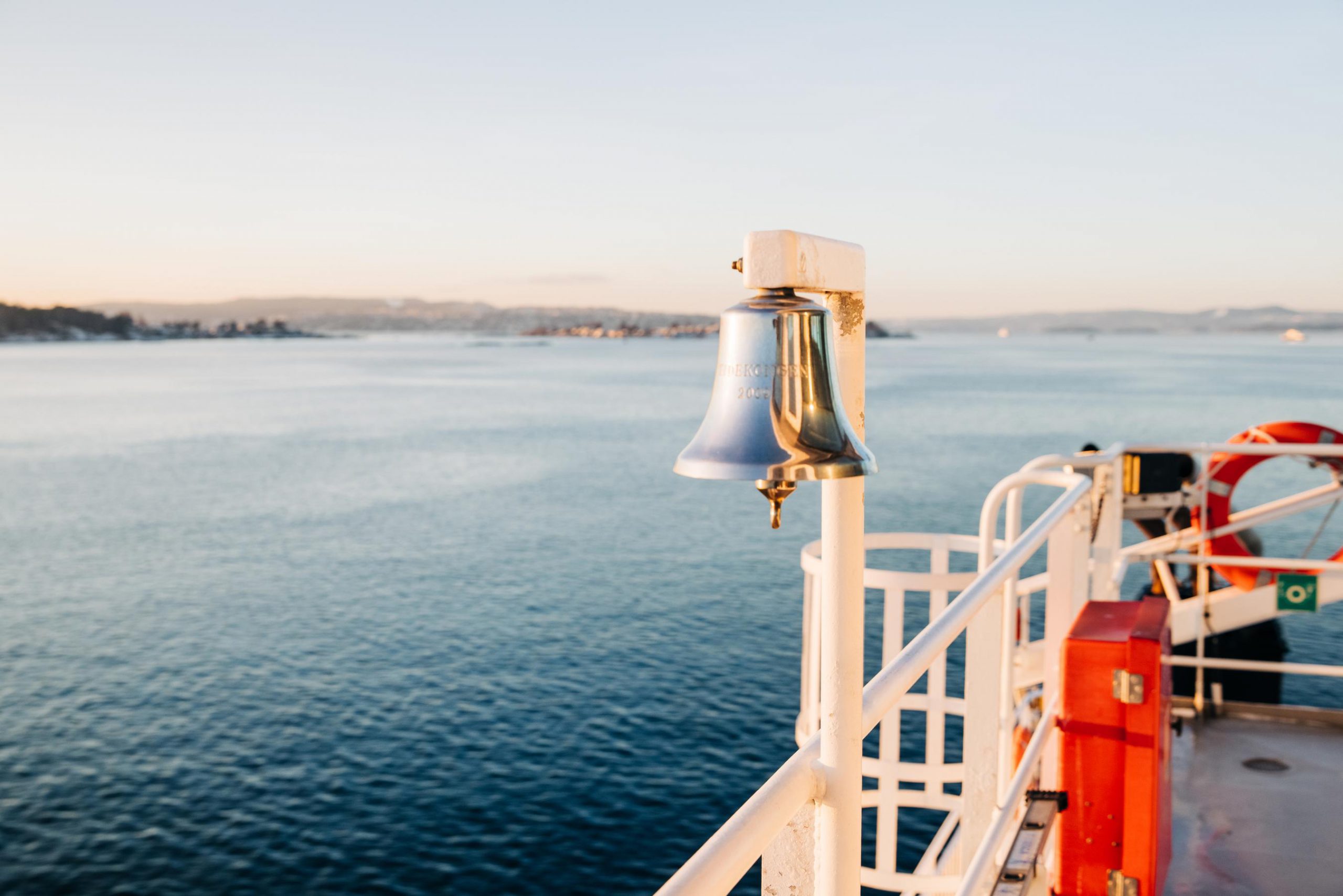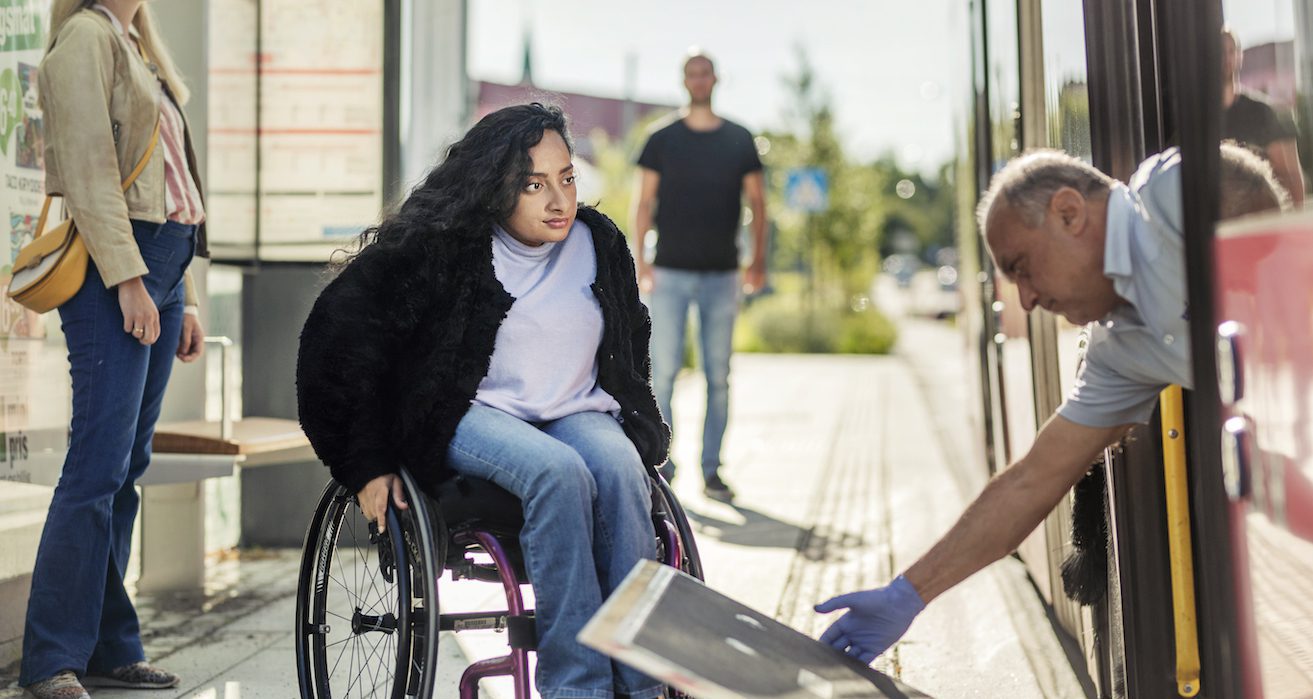
Working with the Sustainable Development Goals
All public transport managed by Ruter has been planned to be emission-free by 2028. Not even a pandemic can set back that deadline. In 2021, we took several steps in the right direction.
Half of all emissions in Oslo come from road traffic. From 2019 to 2020 alone, emissions from road traffic dropped by 6%. A well-developed and well-functioning public transport system is crucial in order to ensure that this positive trend continues.
Ruter’s most important contribution to reducing the environmental and climate impact of traffic is to offer an alternative to the car.
The aim is for all public transport services run by Ruter to be emission-free by 2028. This does not just mean lower greenhouse gas emissions, but also less noise and cleaner air for everyone living and visiting the capital region.
The transition to emission-free services is taking place as old transport contracts expire and are replaced by new ones in which emission-free services are stipulated as a minimum requirement.
Ruter using its purchasing power
The transition to emission-free technology necessitates serious restructuring – both for other market operators and for Ruter.
In order to get suppliers to reach as far as possible and inform themselves about what the market is able to offer, Ruter holds regular market discussions. This takes the form of dialogue conferences and surveys – so-called Requests for Information (RFI).
When Ruter announces tenders, guidelines now often stipulate the use of zero-emission technology (a minimum requirement). Tender award criteria are also clearly stated. Negotiations are conducted in several rounds, and the principles contained in the Norwegian Government Agency for Financial Management’s guide (fuel matrix) are applied in order to assess environmental impact.
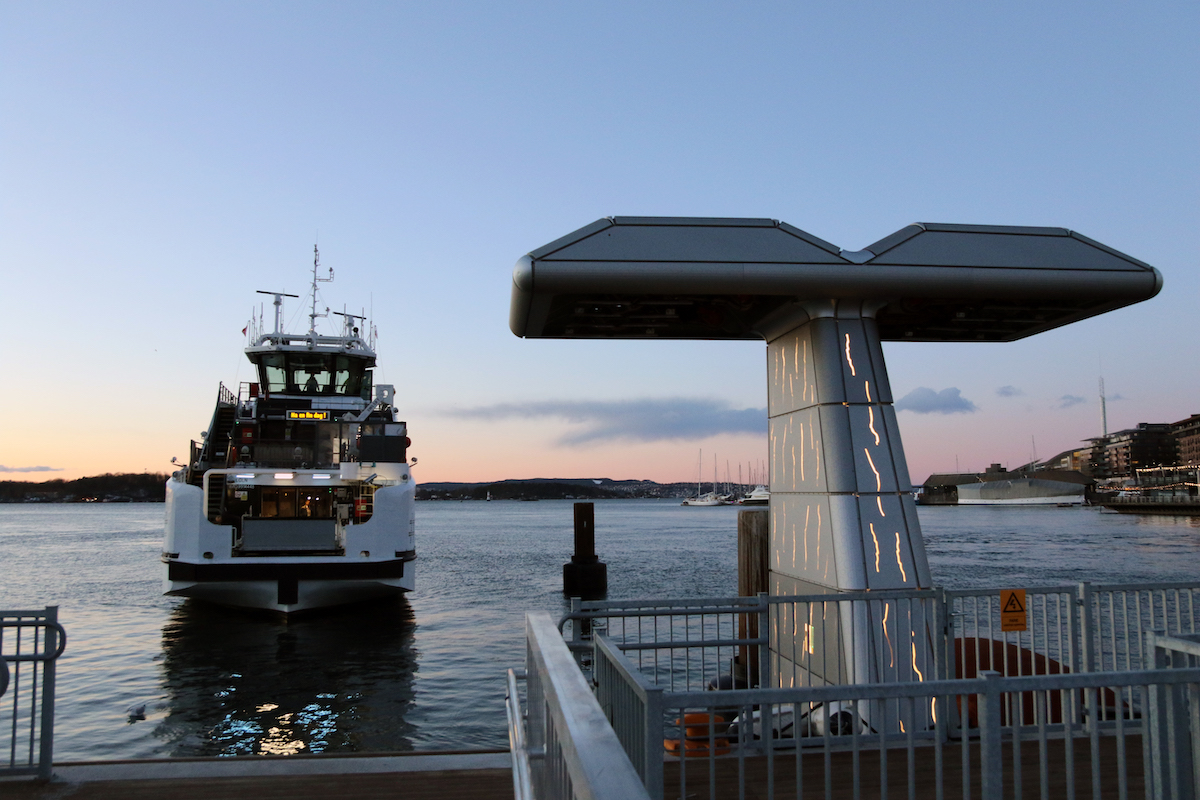
Contracts as tools
Ruter uses its contracts and the options they provide to roll out pilot projects and apply variation orders.
In 2017, Ruter’s work on realising its Zero Emissions 2028 goal began with a two-year electric bus pilot project. To gain insight and experience that could be used in later acquisitions, Ruter installed six electric buses with different charging solutions on three bus lines.
In order for Ruter to acquire additional expertise about electric buses, the pilot project was continued by using variation orders under existing contracts. This meant that another 70 electric buses came into operation in Oslo in 2019, and two lines became almost fully electric – with charging via pantograph at the final stop. Other buses were charged at bus depots.
Ruter also used variation orders to commence electrification of its boats more rapidly. In the autumn of 2018, it was decided that the Nesodden line would be battery-driven. In 2019 and 2020, the three Nesodden boats were converted from liquefied natural gas to electric operation, and the contract was extended to 2034.
Redesigning the boats was a faster, cheaper and more environmentally friendly solution than purchasing new boats. Ruter also built a charging plant at Aker Pier, adapted for emission-free operation of all Ruter’s boats.
Goals, results and plans
- Trams and subways run on certified electricity and are fully electric.
- Six electric buses in Oslo were part of a two-year pilot scheme which started in November 2017.
- 70 electric buses arrived in the spring of 2019 and were deployed on 13 lines in Oslo. The buses were phased in using variation orders under existing contracts.
- 39 electric buses started running in Lørenskog and Lillestrøm as part of new bus contracts in Romerike on 30 June 2019.
- The three Nesodden ferries became electric in 2019 and 2020.
- 18 electric buses were phased in in Asker and 23 in Vestre Aker in the summer of 2020 as part of new bus contracts.
- Ruter’s boat offering in the Inner Oslo Fjord will be served from the autumn of 2021 by Boreal Sjø with five newly built electric boats in place by the summer of 2022. The first boat arrived in Oslo on 15 December 2021.
- 265 of the buses will then be electric, divided into 223 red and 42 green electric buses. These account for almost 40 percent of electric buses in Oslo and approx. 22 percent in total of Ruter’s electric buses.
- Minibus and passenger car services in Follo, starting on 1 August 2022, include 100 fully electric minibuses and cars.
- The tender for bus transport services in Oslo East was announced in January 2022 – with planned start in December 2023. Emission-free services are a minimum requirement for this tender.
- How the transition to emission-free boats will take place has not yet been decided. They can either be converted to emission-free technology in 2024 in the form of a variation order under the current contract or a new contract for emission-free operation may be announced. The boats will be emission-free by 2026-28.
- After 2023, there will be around 800 buses left on regional bus lines in Viken that are not yet emission-free. These lines will switch to emission-free operation by 2028 as new contracts are phased in.
Klimagassutslipp i tonn – CO2 fra buss og båt
From 2018 we have seen a steady decline in CO2 emissions. This is due to the two Zero Fossils 2020 and Zero Emissions 2028 objectives.
As a result of Zero Fossils 2020, many buses have been run on biofuel instead of standard diesel. Zero Emissions 2028 has resulted in more electric buses, and their number will increase further in the coming years.
Find out more about how we calculated our figures here (NO).
NOx emissions from Ruter buses and boats
Emissions of nitric oxide (NOx) have a negative effect on the air. NOx is a chemical compound of oxygen and nitrogen that is toxic to humans – even at low concentrations.
NOx is produced by combustion at high temperatures, e.g. in an internal combustion engine. NOx is formed both by fossil and renewable fuels and by gas and liquid fuels.
The amount of NOx emitted during operation is determined by the bus’s air cleaning technology. The purification technologies are categorised into Euro classes – where Euro VI is the best. These buses have about 30 times lower NOx emissions than the previous generation of buses. Electric buses emit no NOx.
As a result of both electrification of the Nesodden lines and the upgrade of buses to a newer Euro class, NOx emissions have decreased sharply, especially in Viken.
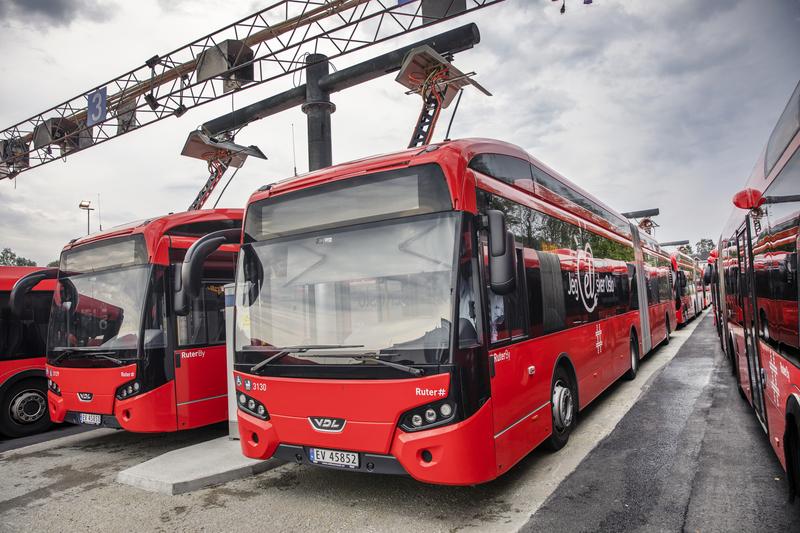
Ruter is becoming more circular
In 2021, Ruter signed up to the 10 Principles for a More Circular Business Community developed by Skift – Business Climate Leaders in partnership with SINTEF, WWF and Deloitte.
Ruter’s remit as a public transport company is to offer solutions for passenger transport which utilise area, energy and equipment more efficiently than the car. This means that Ruter’s business remit is perfectly aligned with the principles of the circular economy.
Ruter’s key environmental commitment to Zero Emissions 2028 – combined with working to reduce use – is an important contribution to a circular economy whose aim is to utilise resources more efficiently and for longer.
Goals, results and plans
Goals
- In 2021, Ruter’s circular economy aim has been to set environmental requirements in procurement, map its own business and supply chain and establish partnerships on innovative improvement projects.
Results 2021
Tender requirements
- Both of the major transport service tenders held in 2021 rewarded contracts that offered environmental initiatives for bus-related equipment that went beyond emission-free operation. Recent tenders have also sought to reward responsible operation and environmental initiatives at depots.
- The tender for IT services, which was announced in December 2021, required and rewarded eco-labelling (TCO certification) measures to ensure that equipment had the longest possible service life and solutions that reduced Ruter’s need for equipment in general.
- The bid that won the tender in 2021 for canteen operations and cleaning services set out clear goals for reducing food waste and the use of chemicals.
Mapping our business
- An initial survey of the environmental status of all the depots was performed in 2021. This survey provided a preliminary overview of electricity and water usage as well as the status of waste management at bus depots. Ruter will be using the survey for further environmental work at bus depots in 2022 and onwards.
- Ruter’s strategy for its charging infrastructure highlights the shared use of charging infrastructure to ensure better resource utilisation of equipment that Ruter pays for and uses. When resources are shared, costs and the need to use space for charging infrastructure are also reduced. This will provide easy access to charging options and facilitate the transition to electric services for other operators.
Innovative projects
- Additional workloads due to the pandemic, combined with budget restrictions, meant that planned collaborative projects could not be completed.
Plans 2022
- In 2022, Ruter will develop a holistic approach to the circular economy, based on the 10 Principles for a More Circular Business Community.
- Ruter will seek to establish collaborative projects to gain greater insight into the way in which life cycle analyses – for vehicles, tyres and batteries – can be used to develop an enhanced basis for competition and contract monitoring.
- Ruter will set requirements for environmental and climate footprints and include the consideration of circularity in all procurements where applicable.
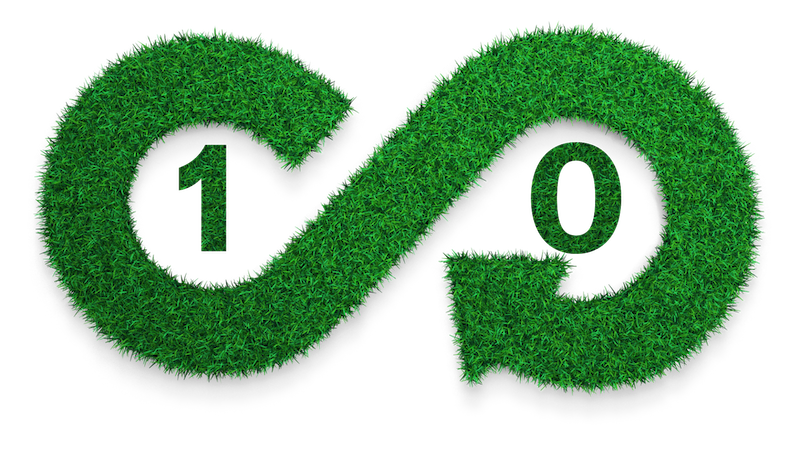
Taking responsibility for the supply chain
A responsible business not only takes care of its own business, but its entire value chain. This is why Ruter works actively on climate and environmental initiatives in collaboration with operators.
1. Bus depots
In 2021, Ruter developed a strategy for bus depots. The main goal is to ensure that Ruter develops and offers bus depots that ensure equal treatment of bidders on bus contract tenders. In 2021, Ruter had 26 bus depots of various sizes.
The bus depot strategy is based on Ruter’s vision of sustainable freedom of movement and the UN’s Sustainable Development Goals and shows the way in which Ruter intends systematically to reduce the climate and environmental footprint of its depots, ensure decent working conditions and work on adaptation to new technology.
Ruter cannot operate without bus depots. They provide a meeting place for drivers and are the point at which buses are charged, washed, repaired and parked between scheduled operational periods.
Improvement of the environmental and climate footprint of the bus depots is about reduced use of energy, electricity and water as well as responsible handling of chemicals and measures to reduce and sort waste. Noise and light pollution also has to be reduced so that depot neighbours are not inconvenienced.
The location of the bus depots plays a role in how environmentally and climate-friendly buses are as a transport solution. Depots located far away from route areas mean a great deal of needless driving, i.e. unnecessary energy consumption, emissions and wear and tear on equipment and road networks – in addition to the impact on local communities that increased traffic entails.
There are significant variations between the depots currently used by Ruter, and there is plenty of room for improvement. Different contracts set different environmental standards for the operation of the depots. Ruter currently has limited knowledge about the environmental status of the various depots and the way in which important environmental issues are approached. No reporting tools or routines have been established that ensure monitoring of agreements on environmental and climate initiatives at depots.
Goals, results and plans
Goals
- Ruter’s depots must be operated with the smallest possible climate and environmental footprint.
- Ruter must be kept updated on the status and improvement plans for the environment and climate for all depots and constructively monitor this work.
Results 2021
- A binding action plan for the environment, climate and efficient operation of the depots was stipulated in the Central Oslo transport services tender, which was awarded to Unibuss in December 2021.
- Requirements for an action plan for the environment, climate and excellent operation of depots are a continuing feature of all new transport service contracts.
- An initial survey of the environmental status of all depots was performed in 2021.
Plans
- Ruter must require targeted climate and environmental work at depots in all new transport service tenders and in all new leases with depot owners.
- In 2022, reporting routines will be established to ensure that bids and contracts are closely monitored.
- For depots that are not covered by agreements on systematic climate and environmental work – entered into as part of transport contracts or the preparation of leases – such agreements will be negotiated separately.
2. Charging infrastructure
In order to meet the aim of Zero Emissions 2028, Ruter’s estimated electricity usage in 2028 will be 420 GWh. This involves large investments in electrical infrastructure.
Charging infrastructure facilities are expensive. Ruter has therefore worked hard to obtain financial support from operators such as Enova.
At the end of 2021, nine of Ruter’s 26 bus depots will be equipped with charging systems for electric buses. For the Nesodden connection and the island boats, charging facilities have been established at Aker Pier.
Electricity supply is strictly regulated by the energy authorities. These regulations form an important backdrop to Ruter’s electrification of its buses and boats. In 2021, Ruter therefore prepared a knowledge base that will ensure that Ruter chooses the most cost-effective and sustainable electrification of its buses and boats.
This knowledge base deals with responsibility models, energy licence rules for charging systems, power and energy costs, savings assessments when establishing high-voltage connection points, options for joint use of charging infrastructure and technology and shared standards.
The knowledge base concludes that a model in which one party takes overall responsibility and has a high-voltage construction licence is the most important measure in reducing environmental and climate impacts from charging infrastructure.
When all responsibility is borne by one party, this provides an incentive to think holistically when designing and establishing the charging system. High-voltage licences provide flexibility in the design of the charging system and also reduce the need for space.
High-voltage licences ensure lower energy costs and provide business opportunities for the sale of charging time through joint use of charging infrastructure. Joint use minimises the need to build fast charging systems elsewhere and reduces both space requirements and the need for development of network infrastructure.
High-voltage construction licences also enable the design of depots that are more suitable for relocation and reuse, which is particularly valuable in the case of temporary bus depots.
To ensure shared use and increased flexibility of the bus fleet, the knowledge base also recommends that charging equipment and charging points on the buses be standardised. This is in line with the standardisation work Ruter performed for charging points in 2020 which has been implemented on bus tenders, including the Central Oslo transport services tender, since 2021.
Goals, results and plans
Results 2021
- High voltage licence: received two licences from NVE.
- Co-use: raised awareness of the subject in the marketplace through breakfast meetings and dialogue conferences.
- Enova support for transport services on the Oslo East tender.
- Established Norway’s largest charging station for buses at Rosenholm Bus Depot as part of a new contract for Oslo South.
- Conducted market research for charging solutions for electric boats.
Goals and plans 2022
- Launch of bids that facilitate the joint use of charging infrastructure in the Oslo East transport services tender.
Ruter’s environmental requirements for bus operators
Ruter plans, coordinates, orders and markets public transport in Oslo and Akershus, but does not own any buses, boats, trams or metro carriages. All transport services are performed by various operating companies that work under contract to Ruter. It is these operators who are responsible for the procurement of all the equipment required to perform their contracts.
These are some of the areas we focus on:
Emission-free operations
Electric buses have become established technology, and it is no longer uncertain whether the market can supply electric articulated buses. In recent tenders for transport services in Oslo, Ruter has therefore set emission-free operations as a minimum requirement. Exceptions are permitted if bridges, tunnels etc. make it impossible to operate a line on electricity alone.
Previously, electric buses were equipped with diesel-powered auxiliary heaters, which were necessary in order to maintain a comfortable temperature for passengers – cooling in summer and heating in winter.
Emission-free auxiliary heaters are a relatively new technology on buses. To encourage the market to use this technology, Ruter has rewarded bids offering additional emission-free heaters. On the tender for transport services in Central Oslo, which was awarded in December 2021, this resulted in all the buses that were put into operation having additional emission-free heaters.
Tyres
Good tyres are an important road safety feature. Ruter sets strict requirements for tyre quality, but also for the way in which the tyres are handled so that the environmental impact of the tyres is minimised. Correct tyre pressure is important in reducing wear. Ruter therefore prioritises the use of tyre pressure monitoring in its tender documentation.
Economical driving without abrupt braking saves energy and contributes positively to passenger safety and satisfaction and tyre service life. Ruter prioritises providers with fleet management systems that emphasise economical driving. Ruter also prioritises bids that offer tyre retreading – where this is safe and possible – as an alternative to buying new tyres.
Batteries
Batteries are a very expensive part of any bus – both in terms of price and the resources and greenhouse gas emissions that go into producing them. To ensure that the operators who win Ruter’s transport service contracts are aware of how various factors affect the life of the batteries, Ruter has evaluated the tenderers’ ‘description of what measures they see as necessary to ensure the longest possible battery life’.
Ruter’s experience from working on tenders in 2021 is that this is no longer something new and that all providers possess solid expertise in the way in which batteries should be treated in order to ensure the longest possible service life. In future tenders, Ruter will therefore no longer be evaluating tenderers on this, but rather ask for a description of the provider’s plan to maintain good battery health.
Batteries that no longer have the capacity to run a bus on schedule can still contribute to the green transition. Ruter requires providers to commit to a plan for the way in which batteries that are removed from buses are to be used, in battery banks or otherwise, before the battery is discarded and sent for recycling.
Life-cycle analysis
In 2019, Ruter conducted a survey of the value chain for buses and boats, including lithium-ion batteries. The value chain survey painted an overall picture of the environmental impact and risk of poor working conditions and human rights violations in various parts of the life cycle of buses and boats.
Ruter has used this value chain analysis to understand the issues and think about how to contribute to positive change, to prioritise and to implement specific procedures.
The value chain analysis provides a general picture. In order to gain specific knowledge about the environmental and climate impact of Ruter buses, Ruter requires life cycle analyses for buses and batteries.
The life cycle analysis should be prepared according to the ISO 14040/44 standard. In performing life cycle analyses, a number of choices are made that affect the results of the analysis.
Ruter therefore does not evaluate at the level of the climate and environmental footprint described in the life cycle analysis. We want to know how the bus manufacturers work with environmental improvement measures – in order to gain knowledge of Ruter’s bus fleet as well as insight into future environmental requirements for bus-related equipment.
Status, goals and results
Results 2021
- Emission-free operation, including additional heaters in the winning bid for Central Oslo.
- Binding measures related to tyre management and batteries in the winning bid for Central Oslo.
Goals 2022
- Continue minimum requirements and award criteria related to environmental standards for bus-related equipment
- Continue requirements for life cycle analysis of tendered equipment
Decent work and respect for human rights
Ruter is committed to the values of decent work and respect for human rights throughout Ruter’s supply chain. This is in line with the goals that Oslo Municipality and Viken County have in place for the purchase of goods and services to ensure a decent working life. Ruter is preparing for the Norwegian Transparency Act to enter into force on 1 July 2022.
Ruter is a major buyer
Ruter plans, coordinates, procures and markets public transport in Oslo and Akershus, but does not own the buses, boats, trams or metro carriages used for its services. All transport is provided by various operating companies that are under contract to Ruter. The operators are responsible for procuring all the equipment needed to perform their contracts – from buses to tyres and uniforms.
Procurement makes up a large part of Ruter’s total budget. Of a budget of approximately NOK 10 billion, procurement amounts to approximately NOK 8 billion. The variation between different types of procurement and contracts is enormous. Ruter differentiates between operator contracts for bus, tram, metro and boat, price cooperation for trains and airport shuttles as well as the purchase of goods and services. The latter are all procurements – with the exception of transport services, payroll and office leases. This amounts to approximately NOK 700 million annually. Ruter has contract periods that vary between one and 25 years. The contracts can have an annual value of up to NOK 2 billion. Ruter’s suppliers range from the self-employed to multinational companies.
Ruter is owned by the City of Oslo and Viken County. Both Oslo and Viken have prepared principles and supplier requirements for procurement of products and services that set serious standards for a decent working life. The Oslo model (NO) and the Viken model deal with both working conditions in the supplier’s own business and in the entire supply chain. Ruter supports these principles and implements them in its own procurement.
Ruter’s transport service contracts – operators and partners in 2021
Buses: Nobina, Norgesbuss, Vy, Unibuss
Tram and metro: Sporveien
Boats: Norled, Oslo-Fergene, Boreal
Imposing requirements on the entire supply chain
Ruter’s contractual specifications for decent working conditions and respect for human rights in Ruter’s supply chains are formulated in Ruter’s Rules of Action for Suppliers (NO) and the appendix to Ruter’s Rules of Action Contract Terms Human Rights (NO). Both of these documents were updated in 2021 to ensure that Ruter’s practices are in line with the requirements of the Norwegian Transparency Act, which enters into force on 1 July 2022. The updated contract terms mean that Ruter requires suppliers to know their supply chain, be willing to share information about it with Ruter and perform due diligence as described in the Norwegian Transparency Act.
In future tenders, Ruter wants to reward tenderers who can point to solid systems and due diligence measures for products and services included in their bid.

Performing risk assessments of transport service contracts
In 2019, Ruter conducted a survey of the value chain for buses and boats, including lithium-ion batteries. The value chain survey painted an overall picture of the environmental impact and risk of poor working conditions and human rights violations in various parts of the life cycle of buses and boats.
Ruter has used the value chain analyses both to understand the issues and think about how we can contribute to positive change, to prioritise and to implement specific procedures.
The value chain survey identified the extraction of raw materials that are part of lithium-ion battery production as the part of the value chain with the highest risk of breaches of human rights and labour standards. Dangerous work, forced labour, child labour, human rights violations and environmental damage are considered probable.
Other parts of the value chain for buses and boats that are produced to run for Ruter are also associated with risk. Complicated value chains for the thousands of components of which a bus or a boat is composed make it very difficult to form a complete picture.
Ruter believes that all transport service contracts have a high inherent risk of human rights violations and standards of decent working conditions. Since Ruter purchases transport services, it is the operator who wins the tender who is responsible for the procurement of necessary equipment, such as buses and charging infrastructure.
Ruter’s contract requirements are to be the leading factor in such procurements. They provide Ruter with information about the supply chain of materials. In line with the requirements of the Norwegian Transparency Act, Ruter will therefore in future transport service contracts require suppliers to perform procurement risk analyses – both of their own business and of their supply chain. They will have to identify, prioritise and implement necessary improvements. Ruter’s providers of transport services will be subject to the requirements contained in the Norwegian Transparency Act for due diligence and provision of information.
Setting requirements for due diligence in contracts for products and services
Ruter has performed a risk categorisation of its portfolio for the procurement of products and services. It is based on the high-risk list (NO) that the Norwegian Agency for Public and Financial Management has prepared. Other sources, such as Ethical Trade Norway, are used as a basis for obtaining information on the risk of human rights violations and the likelihood of poor working conditions. Apart from pure consultancy contracts, Ruter believes that all procurement carries a certain risk of breach of standards for decent working conditions and human rights. When these contracts are announced, Ruter therefore requires tenderers to perform due diligence.
Ruter considers IT equipment to be products with a high risk of breaches of decent working conditions and human rights. This applies both to the extraction of raw materials for rechargeable batteries, but also to the production of other components. IT equipment has a large climate and environmental footprint in its life cycle. In Ruter’s recently announced tender for IT services, Ruter requires that equipment be TCO-certified if such certification is available for the product. This is in addition to Ruter’s Action Rules for Suppliers (NO) and attachment to Ruter’s Rules of Action Contract Terms Human Rights. In the case of IT procurement, the Norwegian Transparency Act imposes independent responsibility on Ruter’s suppliers for conducting due diligence.
Ruter is a member of Ethical Trade Norway. Ethical Trade Norway is a resource centre for sustainable trade which works to promote responsible business practices in global supply chains. All members of Ethical Trade Norway report annually on their ethical trade work.
Ethical trade in procurement and contract monitoring
In 2021, Ruter set up an internal working group to prepare Ruter for the Norwegian Transparency Act which enters into force on 1 July 2022. Important questions for Ruter in this context are how the responsibility for safeguarding ethical trade in procurement and contract monitoring should be organised in Ruter. This involves gap analysis of Ruter’s practices, routines and requirements for the desired standard, the need for expertise, collaboration with external parties and emergency preparedness to meet reporting and information provision requirements. The working group will continue its work in 2022.
Results in 2021
- Updated contract requirements: Ruter’s rules of action for suppliers and appendices to Ruter’s Rules of Action Contract Terms Human rights.
- Established a dialogue with operators about status – something that will be continued in 2022 due to the corona situation.
Goals and initiatives in 2021
- Develop an organisational model and routines for ethical trade related to the purchase of transport services and the purchase of goods and services
- Develop award criteria for ethical trade
- Collaborate with Ruter’s suppliers to prepare an information page containing reports, questions and answers adapted to the requirements of the Norwegian Transparency Act
- Be active in partnerships that promote ethical trade
- Implement skills-building measures
Taking responsibility for working conditions at bus depots
Bus depots are workplaces that are not covered by Ruter’s employer responsibility. Ruter still takes responsibility for ensuring decent working conditions for drivers and others who work at bus depots as they are an important part of our supply chain. The working conditions are thoroughly discussed in Ruter’s bus depot strategy, which was developed in 2021. This applies to buildings, including access to toilet facilities and break rooms, as well as compliance with the provisions of the Norwegian Working Environment Act in general.
Taking overall responsibility for toilets and breakrooms
Decent working conditions mean access to satisfactory toilet facilities and break rooms. Toilet and break facilities for bus drivers at end stops have long been an issue which tends to be overlooked.
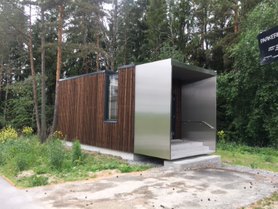
Requiring action plans for working conditions, operations and environment at bus depots
Over time, Ruter has seen that working conditions at bus depots can too quickly become a balancing item in the tripartite cooperation between Ruter, the operator and the depot owner. It is the operators who have responsibility for staff management, but improvements to depots often involve Ruter and depot owners. Many bus systems need upgrading and discussions on cost distribution often take place between operator, Ruter and owner. The bus wash systems at bus depots stand out in particular as they have seen great wear and tear as has the lack of facilities for the employees. As of 2021, Ruter requires that a binding action plan be presented for the operation of the depot – which includes working conditions – as part of any bids for bus contracts.
The bus depots are important for the development of various new solutions related to the electrification of the transport sector. Ruter therefore wants to look at the possibility of entering into partnerships with colleges to create interest in what is happening at bus depots.
Results in 2021
- Established new contracts with Viken County Municipality and Bussanlegg AS for the organisation of the establishment, operation and maintenance of new driver facilities.
- Set requirements for a binding action plan for working conditions, operations and the environment at bus depots as part of any bid for bus services in Central Oslo. The tender was awarded to Unibuss in December 2021.
Goals in 2022
- Ruter has to be a driving force to ensure that bus depots are upgraded to a standard that indicates that a bus depot is an attractive place to work.
- Ruter must have in-depth knowledge of the status of working conditions at bus depots and monitor the situation constructively.
Initiatives in 2022
- Ruter has prepared a design guide for bus systems which aims to look at bus system workflows in order to optimise work processes. This information will be used when renewing and upgrading existing facilities and in the construction of new facilities.
- The requirement that a binding action plan be presented for the operation of and working conditions at bus depots is being continued.
- During 2022, reporting routines will be established that ensure that bids and agreements applicable to working conditions at depots are monitored.
Safety
Ruter has a zero vision for serious accidents
A zero vision for serious accidents is the basis for Ruter’s safety work. By law, it is the operators who are responsible for safety on buses, trams and metro. Through ongoing safety work and specific requirements in operator contracts, Ruter takes active steps to improve safety on public transport – for passengers, drivers and other road users.
Annual overview for injuries on buses, trams and metro, which makes up x percent of journeys managed by Ruter. The overview is based on information from the Ruter Information and Coordination Centre (IOSS). The fact that higher claims figures were registered in 2021 than in 2020 is due to improved systems for reporting incidents and therefore a better basis for preventive safety work.
List of injuries in traffic in 2021
| Injuries | Result 2020 | Result 2021 |
| Accidents involving no personal injury | 186 | 326 |
| Minor injury | 28 | 74 |
| Serious injury | 3 | 9 |
| Deaths | 0 | 0 |
Ruter’s Information and Coordination Centre (IOSS)
IOSS is responsible for continuously monitoring and assessing the traffic situation for all public transport in Oslo and Akershus, including trains. IOSS is responsible for Ruter’s emergency telephone line and acts as a point of contact between the parties involved (internal and external) in the event of adverse incidents and emergencies.
Ruter affects traffic safety by stipulating requirements in contracts
On behalf of Ruter, the Norwegian Institute of Transport Economics in 2019 prepared a report (NO) which looked at the way in which Ruter currently works on traffic safety – with a view to identifying any opportunities for improvement.
The study examined the safety consequences of the requirements Ruter stipulates in its contracts with bus operators. Ruter has a direct impact on traffic safety through requirements for collision protection for drivers. Ruter can also have an indirect impact on safety through requirements for punctuality and regularity, which can have implications for drivers’ experiences of time pressure and stress. Bus types that are poorly adapted to the roads they are used on, and roads that are poorly adapted to bus transport, are also an important traffic safety issue. The report recommended that Ruter systematise its work on traffic safety, by appointing dedicated experts and taking a coordinating role vis-à-vis bus operators and others involved in bus transport safety.
The Norwegian Institute of Transport Economics specifically recommended that Ruter should reward, or require, systematic monitoring of driver speed and driving style, e.g. through training programmes, safety culture work and/or fleet management systems.
Ruter sets requirements and rewards operators for measures that ensure enhanced traffic safety by means of evaluation criteria specified in its tenders.
Making requirements for physical collision safeguards for drivers
As of 2020, Ruter stipulates as a minimum requirement in transport service contracts that buses must include physical collision protection for drivers who are at least in accordance with the UNECE-R29 standard. This has long been a requirement for lorries.
Making requirements for safety certification
Ruter requires operators to be certified according to the traffic safety standard ISO 39001. This is a tool for building a safety culture in a company and specifically describes what is required of a road traffic safety management system.

Rewarding safety measures in tenders
In tenders for transport service contracts, Ruter rewards measures that have low damage figures as targets, such as safety culture, safety management systems and fleet management systems etc.
These are examples of factors that are rewarded:
- Ensuring a commitment to traffic safety in the company’s top management has been clarified in the organisation. Responsibility for traffic safety is defined in the organisation and there is access to resources for implementation.
- Risk analyses are performed regularly and are documented. Risk analyses and results from reporting and learning from incidents are used to define new safety measures. This may be to develop a system and culture for recording incidents, keeping statistics, analysing and implementing measures.
- Road safety goals must be integrated with the organisation’s other business aims, and operators must work on continuous improvement through the establishment of goals, indicators, measures, monitoring of indicators and adaptation of measures.
- Operators must prepare documentation of the processes (such as leadership responsibility, learning and continuous improvement) that are performed and the results achieved.
- Operators must have a system for investigating and learning from incidents and approaches to driving incidents, including driving at bus depots, empty driving and position driving.
Ruter works continuously on traffic safety measures
- Ruter’s Information and Coordination Centre (IOSS) has direct contact with the Oslo Fire and Rescue Service (OBRE), the Emergency Medical Communication Centre (AMK) and the Police Operations Centre. The co-operation between these services is regularly improved based on exchange of information after various types of incident, such as crashed buses, demonstrations, events and other traffic events.
- IOSS follows up on reports that deal with operator traffic safety breaches, such as the use of mobile phones while driving, breaches of the Norwegian Road Traffic Act or adverse behaviour in traffic.
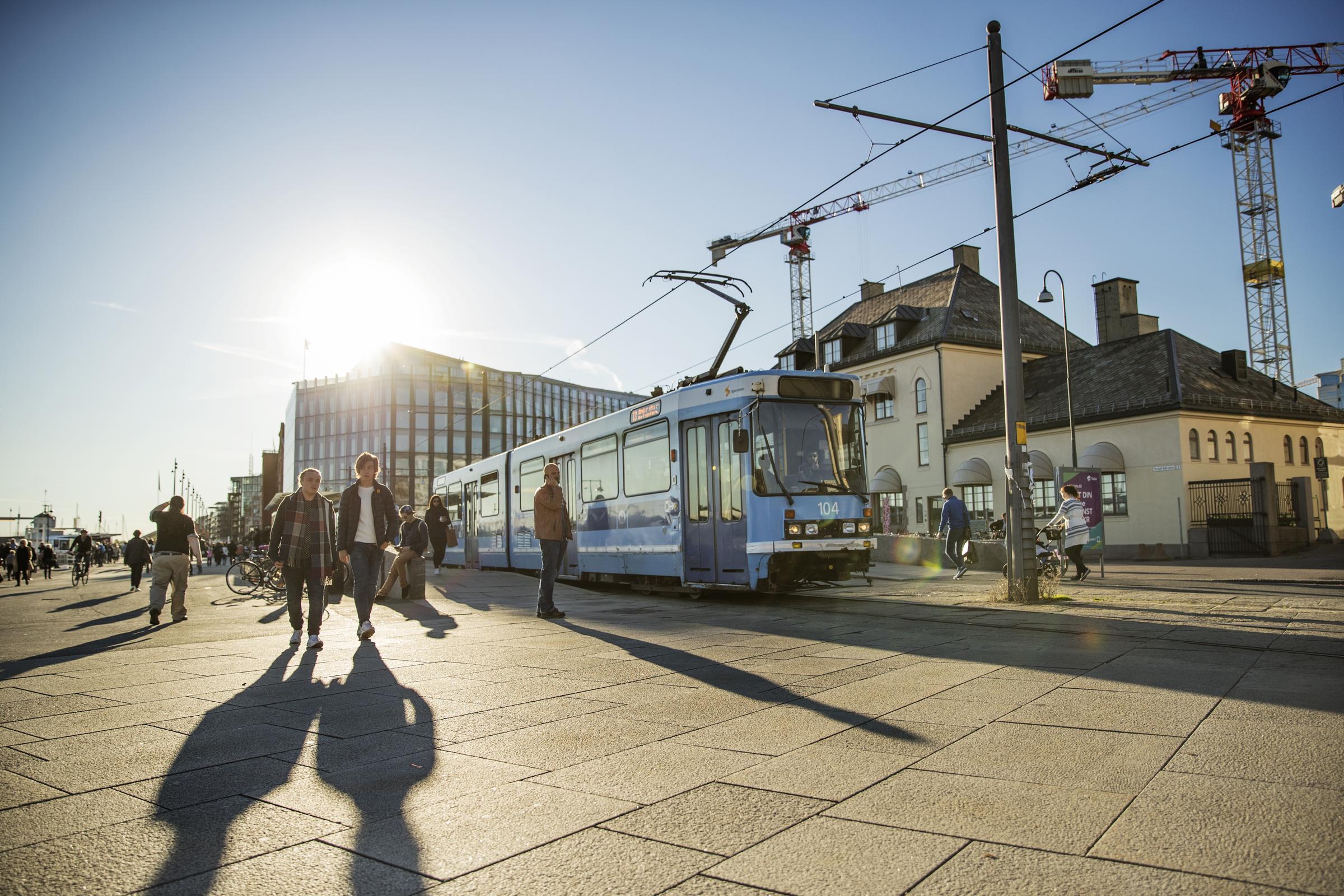
Improvement of safety measures implemented in 2021
- Physical security of the driver has been introduced as a minimum requirement in new contracts. The first award of a contract where this requirement was implemented was the Bus Services Oslo South contract.
- Road safety culture is rewarded in new tenders.
- RuterLogg, which is a self-developed logging system for accidents, was introduced. Here, all details are registered about accidents and incidents, including date/time, place, line/stop and the nature of injuries/damage. Easy export to Power BI and Excel makes it possible to extract statistics for use in mapping problem areas.
- Courses have been completed for IOSS employees in safe traffic management. This enables operations managers to assist in traffic incidents on a safer basis.
Planned safety measures to be implemented in 2022
A zero vision has been set as a goal for Ruter’s traffic safety work. The measures introduced in 2021 will be continued. Ruter will improve its traffic safety work by ensuring that information on traffic safety-related incidents from various sources is coordinated and used systematically to measure the effect of traffic safety initiatives. This includes complaints from customers on social media. This will provide a more solid knowledge base for new, targeted improvement measures in collaboration with operators – in order to prevent incidents from occurring in the first place.

